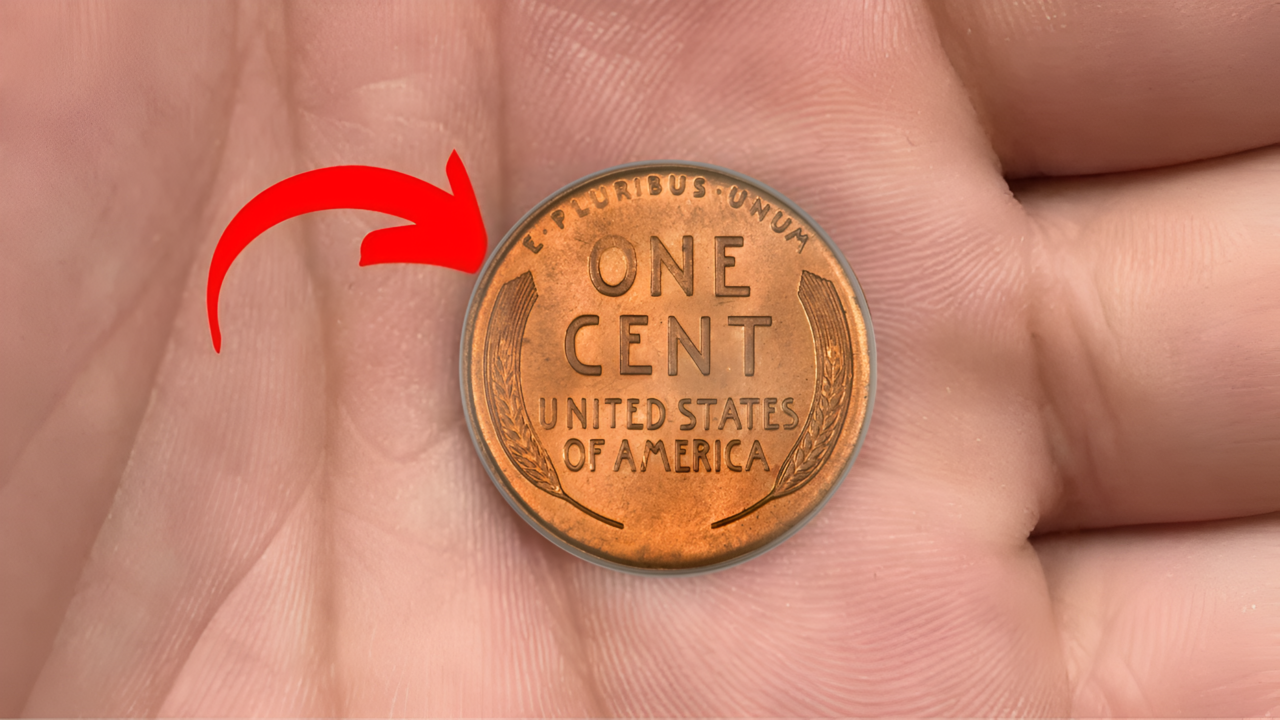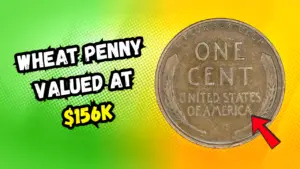Imagine stumbling upon a penny in your pocket change that could change your life forever. While it may sound like a scene from a movie, this is the reality for a few lucky individuals who have discovered rare coins worth millions. Among these treasures is the Lincoln Wheat Penny, a coin that has captured the imagination of collectors and enthusiasts alike. With one particular variant reportedly valued at an astonishing $77 million, the Lincoln Wheat Penny has become a symbol of hidden wealth and historical significance. Let’s dive into the fascinating story behind this extraordinary coin and explore why it remains a sought-after gem in the world of numismatics.
The History of the Lincoln Wheat Penny
The Lincoln Wheat Penny, also known as the “Wheat Cent,” was first introduced in 1909 to commemorate the 100th anniversary of President Abraham Lincoln’s birth. Designed by Victor David Brenner, the coin was groundbreaking as it was the first U.S. coin to feature a real person’s portrait. The obverse side of the coin showcases Lincoln’s profile, while the reverse side features two wheat stalks framing the words “One Cent.” This design remained in circulation until 1958, when it was replaced by the Lincoln Memorial design.
The coin’s composition is equally noteworthy. Made of 95% copper with a small mix of tin and zinc, the Lincoln Wheat Penny was built to last. Its durability has allowed many of these coins to survive decades of use, making them a common find in jars, drawers, and pocket change. However, not all Lincoln Wheat Pennies are created equal. Certain rare variants and minting errors have elevated the value of specific coins to astronomical levels.
What Makes the $77 Million Penny So Special?
While most Lincoln Wheat Pennies are worth only a few cents, some rare editions have become incredibly valuable due to their unique characteristics. The penny valued at $77 million is believed to be a one-of-a-kind error coin or a rare variant from a limited production batch. Here are some factors that contribute to its immense value:
1. Minting Errors
Coins with minting errors are highly prized by collectors. These errors can include double dies, misprints, or off-center strikes. The $77 million Lincoln Wheat Penny is rumored to feature a rare minting error that makes it truly unique.
2. Rare Materials
During World War II, copper was in high demand for ammunition, leading the U.S. Mint to produce pennies from zinc-coated steel in 1943. However, a few pennies were accidentally struck on leftover copper blanks. These 1943 copper pennies are among the most famous error coins in history. While the $77 million penny is not confirmed to be one of these, its rarity and composition are key factors in its valuation.
3. Historical Significance
Certain years and mint marks hold special significance in the world of numismatics. For example, the 1909-S VDB penny, which was part of the first batch of Lincoln Wheat Pennies, is highly sought after due to its limited production. The $77 million penny’s historical context and unique features make it a collector’s dream.
Is the $77 Million Penny Still in Circulation?
Surprisingly, it is possible that this rare penny is still out there, hidden in everyday pocket change. Many valuable coins have been discovered in circulation because people often overlook them. Stories abound of individuals finding rare pennies in coin rolls, old collections, or even on the ground. The idea that a $77 million penny could be sitting unnoticed in someone’s possession adds an element of excitement and mystery to the hunt for rare coins.
How to Identify a Rare Lincoln Wheat Penny
If you’re inspired to start searching for rare pennies, here are some tips to help you identify valuable Lincoln Wheat Pennies:
1. Check the Date and Mint Mark
Certain years and mint marks are more valuable than others. Look for pennies from 1909, 1914, 1922, 1931, and 1943, as well as those with mint marks like “S” (San Francisco) or “D” (Denver).
2. Look for Error Features
Examine the coin under a magnifying glass to spot minting errors such as double dies, misprints, or off-metal strikes. These features can significantly increase a coin’s value.
3. Assess the Condition
The condition of a coin plays a major role in its value. Uncirculated or mint-condition coins are the most desirable. Coins with minimal wear and tear are also highly valued.
4. Verify the Material
For 1943 pennies, check whether the coin is made of copper instead of steel. Copper pennies from this year are extremely rare and valuable.
The Role of Numismatics in Discovering Rare Coins
Numismatics, the study or collection of currency, plays a crucial role in uncovering rare and valuable coins. Numismatists, or coin collectors, dedicate years to studying the history, minting processes, and unique characteristics of coins. Their expertise has led to the discovery of many rare coins, including some Lincoln Wheat Pennies.
For those interested in numismatics, joining a local coin club or attending coin shows can be a great way to learn more about the hobby and connect with fellow enthusiasts. Online resources and forums also provide valuable information and support for aspiring collectors.
The Fascination with Rare Coins
The allure of rare coins lies in their ability to combine history, artistry, and financial value. Each coin tells a story, offering a glimpse into the past and the circumstances of its creation. For collectors, the thrill of the hunt and the possibility of discovering a hidden treasure make numismatics an endlessly rewarding pursuit.
The Lincoln Wheat Penny, with its rich history and iconic design, holds a special place in the hearts of collectors. The possibility that a $77 million penny could still be in circulation adds an extra layer of intrigue, inspiring people to take a closer look at their pocket change.
Final Thoughts
The Lincoln Wheat Penny valued at $77 million is a testament to the enduring appeal of rare coins. Its unique features, historical significance, and astronomical value make it a true gem in the world of numismatics. Whether you’re a seasoned collector or a curious beginner, the story of this extraordinary penny serves as a reminder that treasures can be found in the most unexpected places.
So, the next time you come across a Lincoln Wheat Penny, take a moment to examine it closely. Who knows? You might just hold a piece of history and a fortune in your hands.
F&Q
1. What makes the $77 million Lincoln Wheat Penny so valuable?
Its value comes from a rare minting error, historical significance, and potentially rare materials, making it a unique and highly sought-after coin.
2. Can the $77 million penny still be in circulation?
Yes, it’s possible that the rare penny is still in circulation, hidden among everyday pocket change.
3. How can I identify a rare Lincoln Wheat Penny?
Look for specific years (like 1909, 1914, and 1943), check for minting errors, assess the coin’s condition, and verify its material (especially for 1943 copper pennies).
4. Why are some Lincoln Wheat Pennies worth so much?
The combination of minting errors, rare materials (like the 1943 copper pennies), and historical significance makes certain Lincoln Wheat Pennies exceptionally valuable.
5. How can numismatics help in discovering rare coins?
Numismatists study currency history and minting processes, helping to identify rare and valuable coins like the Lincoln Wheat Penny.


